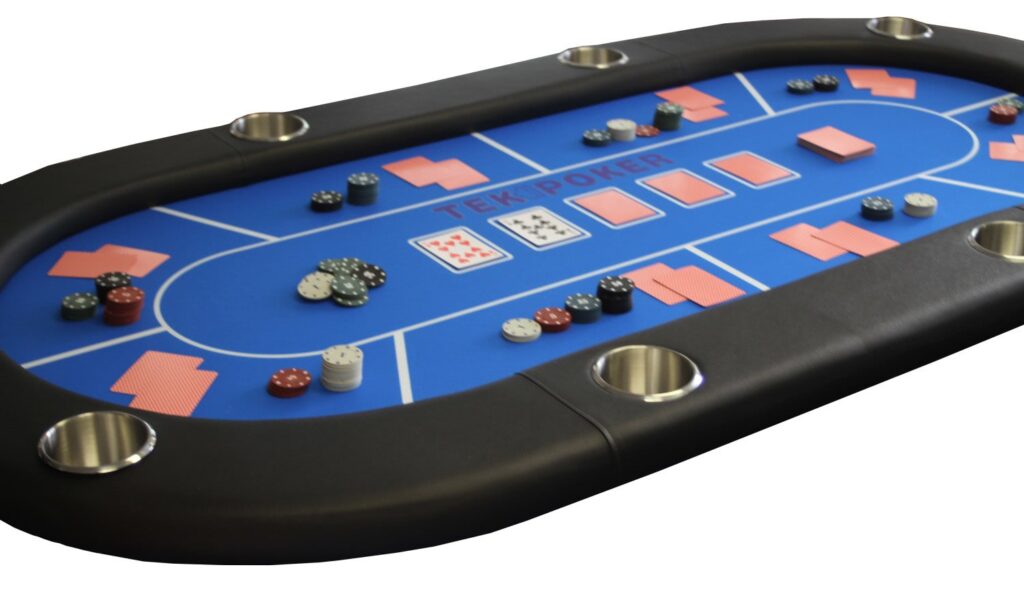Today’s poker lesson will start addressing the different playing styles at the table and identifying them. Yes, it may be a review for some of you, but I want even the freshest player to be able to come up to speed with us. So, the lesson is playing styles, identification, and implementation, and I will have a few things for every level of player. Let’s start with what a lot of us know by now, the four basic playing styles. Each style is identified by their hands played (tight or loose) and their betting (aggressive or passive). Our list will rank the style types from top (best) to bottom (worst). Take a note, if you are looking for a reliable casino, check this link https://slots-online-canada.com/review/river-belle-casino/.
- SOLID – TIGHT & AGGRESSIVE
- MANIAC – LOOSE & AGGRESSIVE
- TIGHT- TIGHT & PASSIVE
- AMATEUR – LOOSE & PASSIVE (also called”Calling Stations”)
In the case of hand play traits, tight players typically stay with the premium starters for their position, the actions of their opponents, and the type of poker game they are playing. A loose player will open up the variety of starting hands they play, put more consideration on “pot odds”, and consider the abilities of their opposition when evaluating their hand.

You will notice that tight and loose playing are spread over the ranking of playing styles. It all comes down to how the cards “run”, and how good your opposition plays. Over a short period of time, a table can”lean” more towards one style by producing”rainbow” flops or “jackpot” flops. It may also be filled with amateur’s on a Friday night casino outing or filled with “sharks” on a weekend-long “fishing trip”. These are just a few things to consider if you are sitting down at a table for a couple of hands or a couple of hours. In the long run (more than a few hours, or one tournament) the odds will favor the tight player, hence its top ranking amongst the playing styles.
In the case of betting traits, aggressive players bet or raise more frequently, and typically raise more than the minimum and usually at least the size of the pot. Passive players tend to check and call, and when they do make a raise, it is typically the minimum and rarely more than the current pot. Now to point out what should be obvious, but amazingly isn’t. Betting styles favor the aggressor, period. More amateurs believe that tight play over loose play is the deciding factor in a game. For whatever reasons, fear, frustration, ignorance, etc., they assume that passivity is the sign of a stronger player and aggression is primarily indicative of a maniac.
When looking at playing styles, you will notice that aggression is the common trait of the two best playing styles. There are two main reasons for this. Aggressive bets force out passive players, even solid hands that may be favored, and aggressive bets make players react, thus giving more opportunities to read the opposition. When you eliminate the passive players, all that is left is to figure out your opposition’s hand type. After you have played the table for a few rounds, you can use all of the indicators I mentioned for each trait and probably put the other players on a hand type. This allows you to evaluate the hands with a reasonable degree of certainty. When you play passive, you allow all playing styles to get involved, thus leaving you uncertain of your opposition’s hands. And this leads into our next chapter.
I can see the hands raising now, “What about the players who change their style?” What is commonly called, “Shifting Gears”. This is as important, if not more, to your game as playing the best Tight-Aggressive system. Even a player who hasn’t mastered the premium hands or evaluating the flop and their outs can outwit their opposition by shifting gears and not allowing their opponents to pin down what cards they may be playing on a given hand. The key to shifting gears is to be unpredictable or to camouflage when this happens. There isn’t the best way to camouflage your shifts, but, if you know some of the common shifts, you can avoid using them and being spotted at an inopportune time.
- Trapping – Changing your betting style when you hit a significantly solid hand. Typically, aggressive players will make”callable” bets, passives will check or push all-in.
- Position – Changing your hand type or bet with the changes in position from the button (dealer). A key to tight gameplay, the actions become exaggerated to show “looseness”. Aggressive players will also try to gain a position with larger than normal bets from early or middle positions. Listen for someone complaining about their blinds being raised “all the time”. Typically, the blind can be identified as passive and/or tight, and if the raiser is the same each time they are playing that position more than the cards.

- Superstition – Changing style to”change their luck” or because of a “favorite hand”. My favorite examples of this are ducks all-in, 6-9 (big lick), dog catcher (K-9), and lady luck (often any queen, not QQ).
- Bankroll – Changing style based on the size of your chip stack or its relation to the table. With increases, solid and tight players will tend to become loose, amateur players tend to become more aggressive, and maniac exaggerates or “bullies”. With decreases, most styles tighten up and then become overly aggressive when they feel the time is right.
- Tournament – Changing your play style throughout the play of a tournament. Players will usually choose to play with the prevalent tournament-style or in direct opposition to the tournament style.
- Acquaintance – Changing style table to table or day to day when involved with regular players who know each other and their gameplay.
- Paranoid – Changing style when a tell or style has been identified. If you spot a paranoid, have fun with it, stare at a specific body part every time you’re involved with them. You’ll drive them crazy.
- Mislead – Changing style in conjunction with an acted tell. Either displaying a nervous tell with a solid hand or continuing an acted tell while changing styles. Timing – Changing styles at a planned time or number of hands. Over a long session, a simple timing strategy can be seen. More “sophisticated” players will employ an algorithm of some sort to keep changes less obvious.
Another tip on camouflaging your shifts, control yourself, for two reasons and in two ways. Shift changes work best when you give them the appropriate amount of time to pay off. Secondly, controlling your “appearance” to keep tells to a minimum, no matter what style, position, hand, etc., have you, keep things appearing the same. To wrap things up today, I want to dispel a few myths about the playing styles. “Solid play is the best play” – Yes, in the long haul, it pays off to be a solid player, but, a Maniac can make a killing. Truth be told, having the fortitude to play maniac and backing it up with solid (not tight) play has much more strength. A maniac will be involved in far more hands than a solid player, giving them more opportunities to win. If you just said “and also to lose”, you don’t have the mindset to play the maniac correctly. One of the maniacs keys is getting reactions, reading them and making the appropriate play, while a solid player is more concerned with making the appropriate play regardless of instincts or intuitions.

“Tight play will keep my bankroll safe” – Maybe, but unlikely. If you stick with tight play, aggressive or passive, you restrict the opportunities to increase your bankroll. And whether it’s antes or blinds, eventually they can creep up on you and leave your bankroll spread across the table. Also, even the top premium hands don’t guarantee a win, and if you are on the winning side of things, your payoff is likely to be smaller as the other players can put you on”the nuts”.
“I’ve developed the perfect poker system”- Just as no one style is perfect, no shift system is perfect. Eventually, someone will catch on.
For a prime example, Doyle Brunson, broke new ground in the game of poker when he wrote “Supersystem”. He also will tell you to this day, with a hint of sarcasm, that it was one of the worst things he did as everyone learned how to play, and worse yet, how he played (he also realizes just how much it helped to propagate the growth of poker, hence he really doesn’t mind). Nowadays, with more people playing, with more knowledge and savvy, and with far more opportunities, no one system will ever work all the time and successful strategies are sure to be identified and replicated.
Well, I think that’s enough for this lesson. You can find a good casino to check my tips here https://slots-online-canada.com/.

